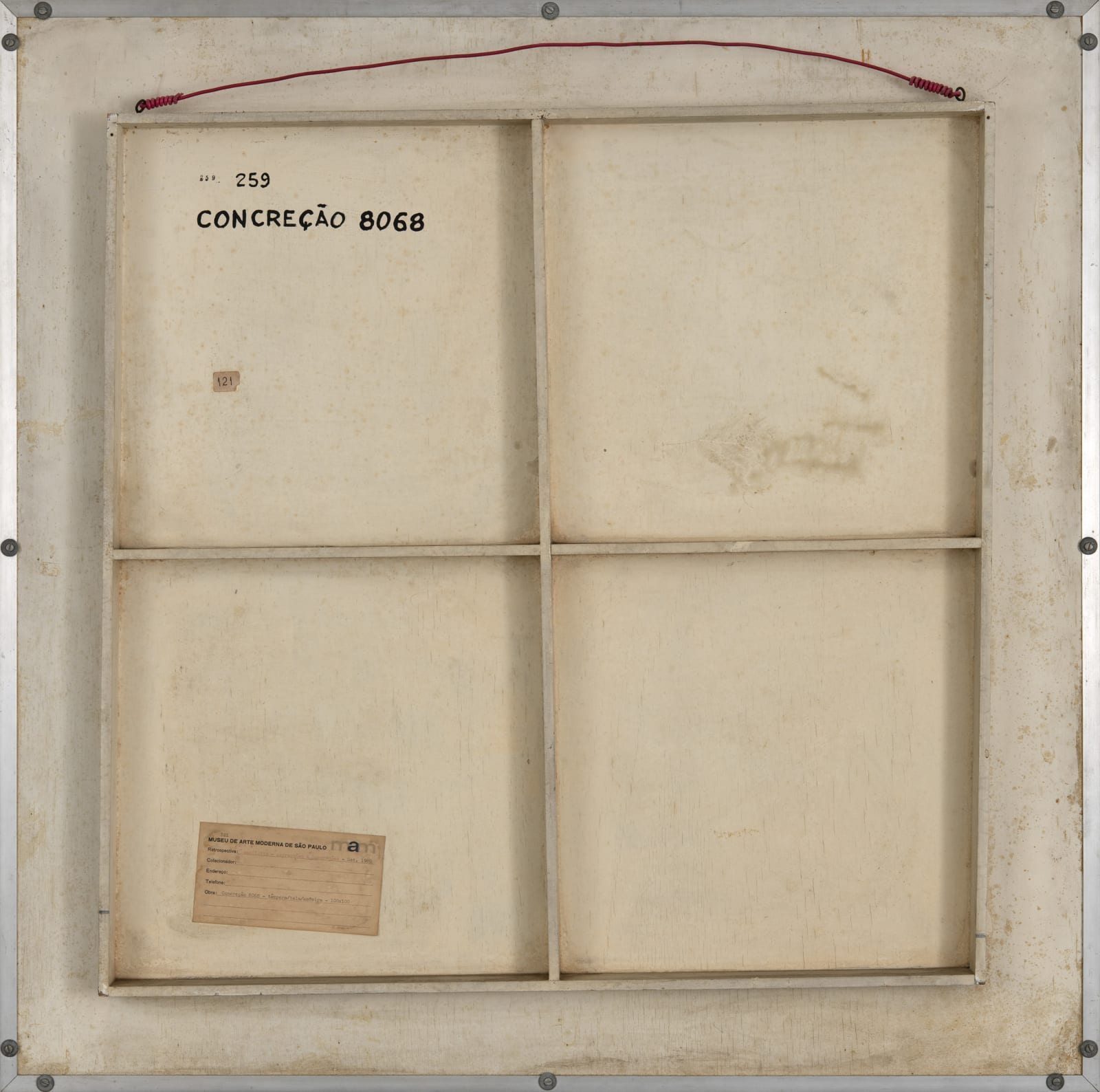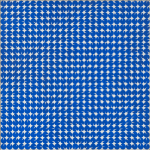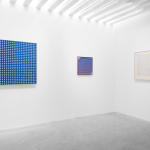Luiz Sacilotto Brazilian, 1924-2003
Concretion 8068, 1980
Tempera on canvas on wood
100 x 100 cm
39 3/8 x 39 3/8 in
39 3/8 x 39 3/8 in
Further images
Luiz Sacilotto (1924 - 2003), originally one of the innovators of Brazilian Concrete art (abstract art that is entirely free of observed reality and that has no symbolic meaning), was...
Luiz Sacilotto (1924 - 2003), originally one of the innovators of Brazilian Concrete art (abstract art that is entirely free of observed reality and that has no symbolic meaning), was described by Waldemar Cordeiro, leader of the ‘Ruptura’ group, as the ‘structural beam’ of Concretism in Brazil. Augusto de Campos, concrete poet, writer, and friend of Sacilotto, also identifies his work in the 1950s as a precursor to Op-Art, claiming that the Brazilian was experimenting with this art form before even Victor Vasarely, who is widely recognised as the father of the movement.
In the wake of a military coup in 1964, which marked the beginning of the civil-military dictatorial regime which lasted 21 years, Sacilotto took a ten-year hiatus from his practice as an artist. This was in part due to the political situation, but Denise Mattar suggests that this career interval was prompted primarily by the end of concretism’s utopian phase. After this intermission, Sacilotto returned to the studio with renewed vigour and with a desire to make his work less static and to focus even more on the kinetic, ‘Op’ elements of his painting. This works, entitled Concretion 8068 (1980 is demonstrative of the wealth of experience and skill that Sacilotto had amassed at this stage of his artistic career. It highlights his geometric precision, manual dexterity, and ability to conjure up illusory, optical effects; furthermore, this moment prefaces Sacilotto’s turn, in the 1980s, towards his meticulous, almost obsessive, studies of colour. His studio contained a large assortment of labelled pigments from over the world, as well as detailed colour charts pertaining to manufacturers or to local areas where he collected natural pigments.
The visual rhythm and movement of Concretion 8068 is implied by the gradual rotation of the white, unpainted wedges in each dark blue disc. Each wedge takes up a sixteenth of a disc’s overall surface area. There are twenty-five aligned discs running vertically and horizontally, 625 in total, which the artist fits onto the 1 by 1 meter-sized canvas. This painting demonstrates Sacilotto’s exactitude and perfection, not as technical precision for its own sake, but rather as a tool to stimulate an experience in the viewer’s subconscious.
In the wake of a military coup in 1964, which marked the beginning of the civil-military dictatorial regime which lasted 21 years, Sacilotto took a ten-year hiatus from his practice as an artist. This was in part due to the political situation, but Denise Mattar suggests that this career interval was prompted primarily by the end of concretism’s utopian phase. After this intermission, Sacilotto returned to the studio with renewed vigour and with a desire to make his work less static and to focus even more on the kinetic, ‘Op’ elements of his painting. This works, entitled Concretion 8068 (1980 is demonstrative of the wealth of experience and skill that Sacilotto had amassed at this stage of his artistic career. It highlights his geometric precision, manual dexterity, and ability to conjure up illusory, optical effects; furthermore, this moment prefaces Sacilotto’s turn, in the 1980s, towards his meticulous, almost obsessive, studies of colour. His studio contained a large assortment of labelled pigments from over the world, as well as detailed colour charts pertaining to manufacturers or to local areas where he collected natural pigments.
The visual rhythm and movement of Concretion 8068 is implied by the gradual rotation of the white, unpainted wedges in each dark blue disc. Each wedge takes up a sixteenth of a disc’s overall surface area. There are twenty-five aligned discs running vertically and horizontally, 625 in total, which the artist fits onto the 1 by 1 meter-sized canvas. This painting demonstrates Sacilotto’s exactitude and perfection, not as technical precision for its own sake, but rather as a tool to stimulate an experience in the viewer’s subconscious.
Provenance
Artist's Family EstateExhibitions
Luiz Sacilotto, Cecilia Brunson Projects, London (15 September - 30 November 2021)Sacilotto: expressões & concreções. Museu de Arte Moderna de São Paulo, Parque do Ibirapuera. São Paulo, Brazil. (September-October 1980.)
Literature
Luiz Sacilotto (Cosac Naify, Brazil, 2021, p. 83, illustrated)1
of
9









